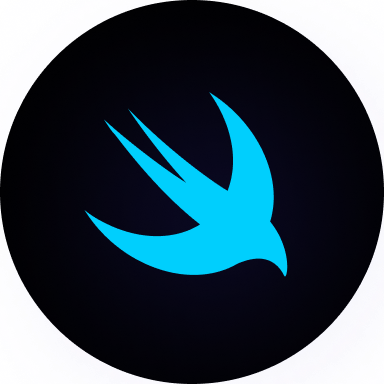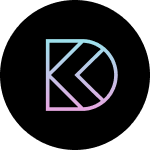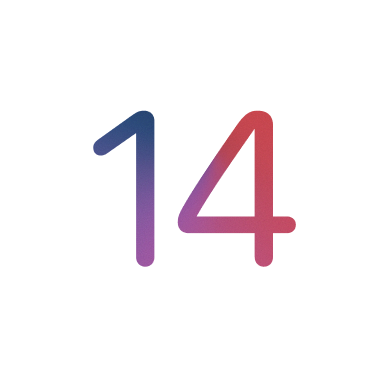React Native for Designers
Add to favorites
Build an iOS and Android app from scratch
Play video
React Native for Designers
1
React Native for Designers
24:10
2
Styled Components in React Native
30:30
3
Props and Icons
25:54
4
Static Data and Loop
33:29
5
States and Animations
32:10
6
Redux
37:32
7
Fetch API Data
21:48
8
Screens and Navigation
28:25
9
Passing Data in React Native
17:28
10
GraphQL and Contentful
23:22
11
HTML and Markdown
25:57
12
Adapting for iPad and Android
22:07
About this Course
This is a course made for designers, by a designer, focused on UI, animations and a workflow that starts with the design tool. The code and pace was made to be easy to follow. Every step is visual and can be followed with ease. You can take this course without any programming experience, but having some CSS and HTML knowledge definitely helps you to navigate the complexity of some concepts. The design file in InVision Studio (free), project assets and React Native source code are shared so that you can compare against your own progress.
2-Part Course
This first part contains 12 sections, followed by another 12 sections in Part 2. This is a massive course with over 10 hours of learning materials and bonus code for additional screens and fixes.
Why Learn React Native?
React Native is widely considered the best way to create cross-platform apps. If you've taken my React course, you'll feel right at home because the code is extremely similar. Today, most designers know HTML and CSS for Web. I firmly believe that they should pick up equivalent skills for mobile. Owning the visual aspect, the animations and the adaptiveness of your app can save a tremendous amount of time for your team, avoiding unnecessary communications or make poor design decisions. In turn, it increases collaboration between designers and developers. Ultimately your product will ship faster, at a higher quality and with better iterations.
Workflow
We're going to use Expo to set up our development environment so that it's easy to test our app in iOS and Android simulators, and on your physical device. For styling, we're going to use Styled Components because of its similarity to the syntax in CSS. Icon assets are going to be vector-based in SVG. For content and CMS (content management system), we'll use Contentful and Apollo/GraphQL, which allows you to store your images and texts independently and query them like a database. Like this, when you update your content, you don't need to send an app update.
We're going to use Redux for communicating between components so that one action can influence multiple components at the same time. This is especially useful for persistent states and data. Apart from that, we're going to use as many built-in libraries in the React Native/Expo toolbox as possible, like Animated, Gestures, Icons and Navigation.
Install Node
Before starting, you'll need the Node package manager (NPM) for installing React and Expo. To install Node, you need to head to their site and download the version appropriate to your system. You can also install node using Homebrew (Mac only) if you prefer.

Install Xcode
If you're on a Mac, I highly recommend installing Xcode for the required Command Line Tools and for using the iOS Simulator. Xcode also comes with Git, which is wonderful for development.

In Xcode, make sure to go to Xcode, Preferences, Locations and see that the Command Line Tools are properly installed.

Terminal
To install pretty much any library such as Git or React, you’ll need to use the Terminal. It’s essentially a place you can write commands to run programs for you, such as installing new frameworks or updating your libraries. To open the Terminal, run Spotlight (Command + Space) and type Terminal. Once you're there, go to your Downloads folder. You can press Tab to autocomplete Downloads.
cd DownloadsFeel free to put your project on your Desktop or in your Documents instead. The reason I choose Downloads is because iCloud won't interfere with Hot Reload.
Install Expo
Expo will allow us to have a development environment for creating our app. Go to Terminal and type this command and press Enter.
sudo npm install expo-cli --globalGo to their Quick Start guide for more detailed instructions.
- sudo allows you to install libraries that requires admin privileges. Make sure that your Mac account is set to Admin.
- global means that you can run the expo command from any folder in Terminal.
Create Project
Start building your first React Native project by running this command.
expo init designcode-app- Choose the Blank template.
- Choose managed (default).
- Set the name to "Design+Code". Or, feel free to use any name you wish.
- Install Yarn.
- Enter the project name and description. Slug should be designcode-app.
Go to your new project's folder and start the environment.
cd designcode-app
expo startThe Expo developer tools will open in your browser and you will see a page like this.

Preview on iOS Simulator
You can click on the button Run on iOS Simulator. This will automatically open the iOS simulator. Allow some time to build the Javascript bundle and you'll see an Expo screen. Click Got it. Voila! Your first app is running!

In order to preview your first app, make sure to have Xcode installed, which will give you access to its iOS simulators. You can change the device to any from the long list: iPad, iPhone X, iPhone 8, etc.

A few tips:
- Command + R to refresh the page.
- If something goes wrong, just Command + Q the simulator and click on Run on iOS Simulator again.
- Go to Hardware > Device to change the device.
- Do Command + right arrow or left arrow to switch between portrait and landscape.
- Command + 1 and 2 will make the simulator Physical size (smaller) or Pixel accurate respectively. You can also resize the device by mouse hovering the corners of the device.
Preview on Android Emulator
Download Android Studio to preview your app in Android emulators. After installation, create a new project (with default settings) and wait about 5 mins for things to build, until you see the Play icon become green. Click on it. From there, create a new virtual device and download the latest Android OS on it.

Once completed, it'll launch the Android Studio project in the emulator.

From now on, you can click on the Run on Android device/emulator button in your Expo developer tools. This will test your app using the emulator.
Preview on Device
Make sure to install the Expo iOS app and Android app on your phone. Once you have Expo installed, you can scan the QR code found in the dashboard using the Camera app. Your phone will ask you if you want to open the link using Expo. Then, it'll open your app automatically. Pretty neat!
Download VSCode
To edit your code, you'll need Visual Studio Code. It's currently the best code editor on the market because of its extensive list of features and extensions.
Drag and drop your designcode-app folder from Downloads to the Visual Studio Code app icon. This will open the project files.

VSCode Extensions
From the left menu, you can navigate to the Extensions tab and install new ones. Search for the following extensions to install them. Make sure to click on Install, then Reload.

Material Theme – This is the theme that I personally use. It looks great and has a variety of color themes depending on your mood. The icon collection is also a nice touch.
Prettier – this extension is fantastic for beginners since it'll ensure that your code is always nicely indented and formatted. It keeps your code consistent every time you save.
Styled Components – since we'll be using Styled Components, this will make sure that we'll have CSS code highlighting.
GraphQL for VSCode – code highlighting for GraphQL code.
Committing to Git
If you have Git installed, you might see that your files have a bunch of letters next to them. You'll want to commit each time you're making big updates.
To do so, press on Command + Shift + P to activate the Command Palette. This allows you to quickly find any command by typing. Select Commit All and press Enter. Write your commit message like initial commit and press Enter again. As a result, you'll only see the new changes.

If you happen to have Github, you can simply create a new repository and link that to this project.
Set Material Theme
Do Command + Shift + P again and select Preferences: Color Theme. Select Material Theme Darker. Reload VScode to see the new icons!

Import Assets
Right-click the assets folder and select Reveal in Finder. Now, you can move all the assets files downloaded to the project's assets folder.

App Configuration
In app.json, you can change the settings for your app, like the app name, description, etc. Feel free to change the description that fits best for your app.
"orientation": "default",
"icon": "./assets/icon.png",
"splash": {
"image": "./assets/splash.png",
"resizeMode": "contain",
"backgroundColor": "#f0f3f5"
},Orientation
By default, the orientation will be limited to Portrait. Since our app will work for both tablets and phones, we'll set it to default, which means it'll work for Landscape as well.
App Icon
The icon should designed at 192x192. React Native will automatically resize the image when they're used at different places across Android and iOS. Also, when exporting to PNG, make sure there is a background color.
Splash screen
A popular way to design it is to simply to put your logo at the center of it with a custom background color. The resolution should be 414x812 at @3x, so 1242x2436 pixels.
The splash isn't adaptive to different resolutions, so you can't make it seem like a loading screen, a technique that Apple is known to do for apps like Settings, Music and App Store.
Project Structure
The main files that you need to pay attention to are the following:
- assets folder: this is where you put all your local images and icons.
- App.js - this is where it all starts. Your app will reference this file on first load. It's sort of the index.html.
- app.json - your app configuration where you set your app name, icon, loading screen, orientation, bundle identifiers, etc.
React Code
import React from "react";
export default class App extends React.Component {
render() {
return (
// ...
);
}
}Basic Components
import { StyleSheet, Text, View } from "react-native";Unlike the Web which uses div and p tags, mobile has its own set of tags, except they start with a capital letter.
- View - this is for any container. It's like a div in the Web.
- Text - for any text, you absolutely need to wrap inside a Text.
CSS StyleSheet
React Native uses all the same CSS properties you'd use for building a site. Unlike the Web, you don't create a .css file to store the styling. Instead, it all happens in the same file as the screen.
<View style={styles.container}></View>
const styles = StyleSheet.create({
container: {
flex: 1,
backgroundColor: "white",
alignItems: "center",
justifyContent: "center"
}
});Flexbox
If you haven't learned Flexbox, this will be a good time. Basically, it allows you to set rows and columns, align the items both horizontally and vertically very easily. React Native uses Flexbox prominently in their guide.
Flex: 1 means that it will take the entire space of the container. In this case, it's the entire device screen.
flex: 1VSCode Integrated Terminal
While the Terminal app is good to start with for installing all the necessary tools, the integrated terminal in VSCode is extremely convenient for installing additional libraries. You can definitely use this instead of Terminal if you choose to.
To access the integrated terminal, do Command + `.
CSS
React Native uses all the same CSS properties you'd use for building a site. Unlike the Web, you don't create a .css file to store the styling. Instead, it all happens in the same file as the screen.
Templates and source code
Download source files
Download the videos and assets to refer and learn offline without interuption.
Design template
Source code for all sections
Video files, ePub and subtitles
Videos
ePub
Assets
Subtitles
1
React Native for Designers
Build an iOS and Android app from scratch
24:10
2
Styled Components in React Native
Basic styling in React Native
30:30
3
Props and Icons
Create components that can receive properties
25:54
4
Static Data and Loop
Create a list of items using data
33:29
5
States and Animations
Animate your user interface with states
32:10
6
Redux
Manage states across multiple components
37:32
7
Fetch API Data
Working with data from popular APIs
21:48
8
Screens and Navigation
Connecting multiple screens to create a seamless navigation
28:25
9
Passing Data in React Native
Sending data from a screen to another
17:28
10
GraphQL and Contentful
Dynamic data and queries from a content management system
23:22
11
HTML and Markdown
Working with a Web View to render HTML code and Markdown
25:57
12
Adapting for iPad and Android
Working with the differences between Android and iOS
22:07
Meet the instructor
We all try to be consistent with our way of teaching step-by-step, providing source files and prioritizing design in our courses.
Meng To
I design, code and write
Meng To is the author of Design+Code. Meng started off his career as a self-taught designer from Montreal and eventually traveled around the world for 2 years as his US VISA was denied. During his travels, he wrote a book which now has 35,000 readers.
40 courses - 194 hours

Master AI Prompting for Stunning UI
Learn how to leverage AI tools like Aura for creating beautiful designs, working with templates, and experimenting with advanced prompts. A concise guide for designers and developers to level up their skills.
10 hrs

Build SwiftUI apps for iOS 18 with Cursor and Xcode
In this course, we'll explore the exciting new features of SwiftUI 6 and Xcode 16 for building iOS 18 apps. From mesh gradients and text animations to ripple effects, you'll learn how to create polished, highly custom apps using the latest workflows. We'll also dive into using Cursor and Claude AI for AI-driven coding, helping you start strong and customize your apps.
5 hrs

Create your Dream Apps with Cursor and Claude AI
Learn to build your dream web apps from the ground up using Cursor, Claude AI, and a suite of powerful AI tools. This course covers everything you need, including React for frontend development, Firebase for backend integration, and Stripe for handling payments. You’ll also dive into advanced AI tools like Claude Artifacts, Galileo AI, v0.dev for UI, Ideogram for design generation, and Cursor Composer for full-scale development.
6 hrs

Build a React Site from Figma to Codux
In this course, you'll learn to build a website from scratch using Codux, starting with a Figma template. You’ll master responsive design, collaborate with developers on a real React project, export CSS from Figma using Locofy, set up breakpoints with media queries, add CSS animations, improve SEO, create multiple pages with React Router, and publish your site. By following best practices, you’ll bridge design and development, improve your web design skills.
2 hrs

Create 3D UI for iOS and visionOS in Spline
Comprehensive 3D Design Course: From Basics to Advanced Techniques for iOS and visionOS using SwiftUI
3 hrs

Master No-Code Web Design with Framer
In this free Framer course, you'll learn to create modern, user-friendly interfaces. Start with dark mode and glass designs, then move from Figma to Framer, using vectors and auto layout for responsive websites. Add animations, interactive buttons, and custom components with code. Finally, you'll craft a design system suitable for teamwork or solo projects, all in a straightforward and practical approach.
4 hrs

Build SwiftUI Apps for iOS 17
In this course, we’ll be exploring the fresh and exciting features of SwiftUI 5! As we craft a variety of iOS apps from the ground up, we'll delve deep into the treasure trove that is SwiftUI's user interface, interactions, and animations.
4 hrs

Build Beautiful Apps with GPT-4 and Midjourney
Design and develop apps using GPT-4 and Midjourney with prompts for SwiftUI, React, CSS, app concepts, icons, and copywriting
4 hrs

Build SwiftUI apps for iOS 16
Create animated and interactive apps using new iOS 16 techniques using SwiftUI 4 and Xcode 14
5 hrs

Build a 3D Site Without Code with Framer
Design and publish a responsive site with 3D animation without writing a single line of code
3 hrs

Create 3D Site with Spline and React
Design and code a landing page with an interactive 3D asset using Spline and CodeSandbox
1 hrs

Build an Animated App with Rive and SwiftUI
Design and code an iOS app with Rive animated assets, icon animations, custom layouts and interactions
3 hrs

Build a SwiftUI app for iOS 15 Part 3
Design and code a SwiftUI 3 app with custom layouts, animations and gestures using Xcode 13, SF Symbols 3, Canvas, Concurrency, Searchable and a whole lot more
4 hrs

Build a SwiftUI app for iOS 15 Part 2
Design and code a SwiftUI 3 app with custom layouts, animations and gestures using Xcode 13, SF Symbols 3, Canvas, Concurrency, Searchable and a whole lot more
3 hrs

Build a SwiftUI app for iOS 15
Design and code a SwiftUI 3 app with custom layouts, animations and gestures using Xcode 13, SF Symbols 3, Canvas, Concurrency, Searchable and a whole lot more
4 hrs

React Livestreams
Learn how we can use React Hooks to build web apps using libraries, tools, apis and frameworks
4 hrs

Design Founder Livestreams
A journey on how we built DesignCode covering product design, management, analytics, revenue and a good dose of learning from our successes and failures
2 hrs

SwiftUI Advanced Handbook
An extensive series of tutorials covering advanced topics related to SwiftUI, with a main focus on backend and logic to take your SwiftUI skills to the next level
4 hrs

iOS Design Handbook
A complete guide to designing for iOS 14 with videos, examples and design files
2 hrs

SwiftUI Handbook
A comprehensive series of tutorials covering Xcode, SwiftUI and all the layout and development techniques
7 hrs

Build a web app with React Hooks
Learn how we built the new Design+Code site with React Hooks using Gatsby, Netlify, and advanced CSS techniques with Styled Components.
4 hrs

UI Design Handbook
A comprehensive guide to the best tips and tricks for UI design. Free tutorials for learning user interface design.
2 hrs

Figma Handbook
A comprehensive guide to the best tips and tricks in Figma. Not affiliated with or endorsed by Figma, Inc.
6 hrs

SwiftUI for iOS 14
Build a multi-platform app from scratch using the new techniques in iOS 14. We'll use the Sidebar and Lazy Grids to make the layout adaptive for iOS, iPadOS, macOS Big Sur and we'll learn the new Matched Geometry Effect to create beautiful transitions between screens without the complexity. This course is beginner-friendly and is taught step-by-step in a video format.
3 hrs

SwiftUI Livestreams
This is a compilation of the SwiftUI live streams hosted by Meng. Over there he talks and teaches how to use design systems, typography, navigation, iOS 14 Design, prototyping, animation and Developer Handoff.
19 hrs

UI Design Livestreams
This is a compilation of the UI live streams hosted by Meng. Over there he talks and teaches how to use design systems, typography, navigation, iOS 14 Design, prototyping, animation and Developer Handoff.
26 hrs

UI Design for Developers
In this course we'll learn how to use design systems, set up break points, typography, spacing, navigation, size rules for adapting to the iPad, mobile and web versions, and different techniques that translate well from design to code.
3 hrs

Build an app with SwiftUI Part 3
This course was written for designers and developers who are passionate about design and about building real apps for iOS, iPadOS, macOS, tvOS and watchOS. SwiftUI works across all of those platforms. While the code is not a one-size-fits-all, the controls and techniques involved can apply to all platforms. It is beginner-friendly, but it is also packed with design tricks and cool workflows about building the best UIs and interactions.
4 hrs

Build an app with SwiftUI Part 2
This course was written for designers and developers who are passionate about design and about building real apps for iOS, iPadOS, macOS, tvOS and watchOS. SwiftUI works across all of those platforms. While the code is not a one-size-fits-all, the controls and techniques involved can apply to all platforms. It is beginner-friendly, but it is also packed with design tricks and cool workflows about building the best UIs and interactions.
4 hrs

Build a full site in Webflow
Webflow is a design tool that can build production-ready experiences without code. You can implement CSS-driven adaptive layouts, build complex interactions and deploy all in one tool. Webflow also comes with a built-in content management system (CMS) and Ecommerce for creating a purchase experience without the need of third-party tools.
3 hrs

Advanced Prototyping in ProtoPie
ProtoPie is a cross-platform prototyping tool that creates prototypes nearly as powerful as those made with code, with half of the efforts, and zero code. It's perfect for designers who want to quickly experiment with advanced interactions using variables, conditions, sensors and more.
3 hrs

Build an app with SwiftUI Part 1
This course was written for designers and developers who are passionate about design and about building real apps for iOS, iPadOS, macOS, tvOS and watchOS. SwiftUI works across all of those platforms. While the code is not a one-size-fits-all, the controls and techniques involved can apply to all platforms. It is beginner-friendly, but it is also packed with design tricks and cool workflows about building the best UIs and interactions.
4 hrs

React Native for Designers Part 2
React Native is a popular Javascript framework that builds on top of React by using native components to create a real mobile app indistinguishable from one made using Xcode or Android Studio. The main difference with native development is that you get to use CSS, hot-reload, Javascript and other familiar techniques that the Web has grown over the past decades. Most importantly, you're building for both iOS and Android using the same codebase.
3 hrs

React Native for Designers
React Native is a popular Javascript framework that builds on top of React by using native components to create a real mobile app indistinguishable from one made using Xcode or Android Studio. The main difference with native development is that you get to use CSS, hot-reload, Javascript and other familiar techniques that the Web has grown over the past decades. Most importantly, you're building for both iOS and Android using the same codebase.
5 hrs

Design System in Figma
Learn how to use and design a collaborative and powerful design system in Figma. Design Systems provide a shared library of reusable components and guidelines and that will let you build products much faster
3 hrs

React for Designers
Learn how to build a modern site using React and the most efficient libraries to get your site/product online. Get familiar with Grid CSS, animations, interactions, dynamic data with Contentful and deploying your site with Netlify.
3 hrs

Swift Advanced
Learn Swift a robust and intuitive programming language created by Apple for building apps for iOS, Mac, Apple TV and Apple Watch
9 hrs

Learn Swift
Learn Swift a robust and intuitive programming language created by Apple for building apps for iOS, Mac, Apple TV and Apple Watch
4 hrs

Learn Sketch
Learn Sketch a design tool entirely vector-based and focused on user interface design
5 hrs

Learn iOS 11 Design
Learn colors, typography and layout for iOS 8
1 hrs
